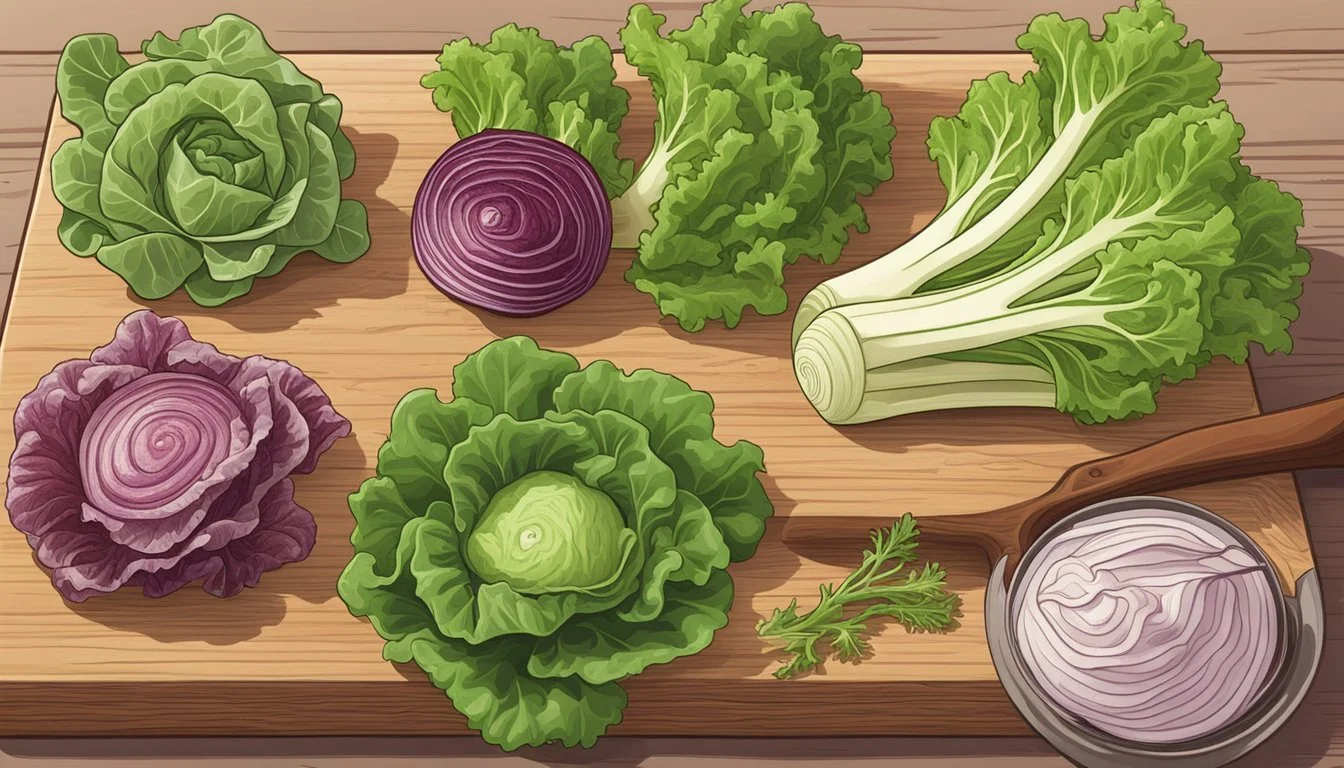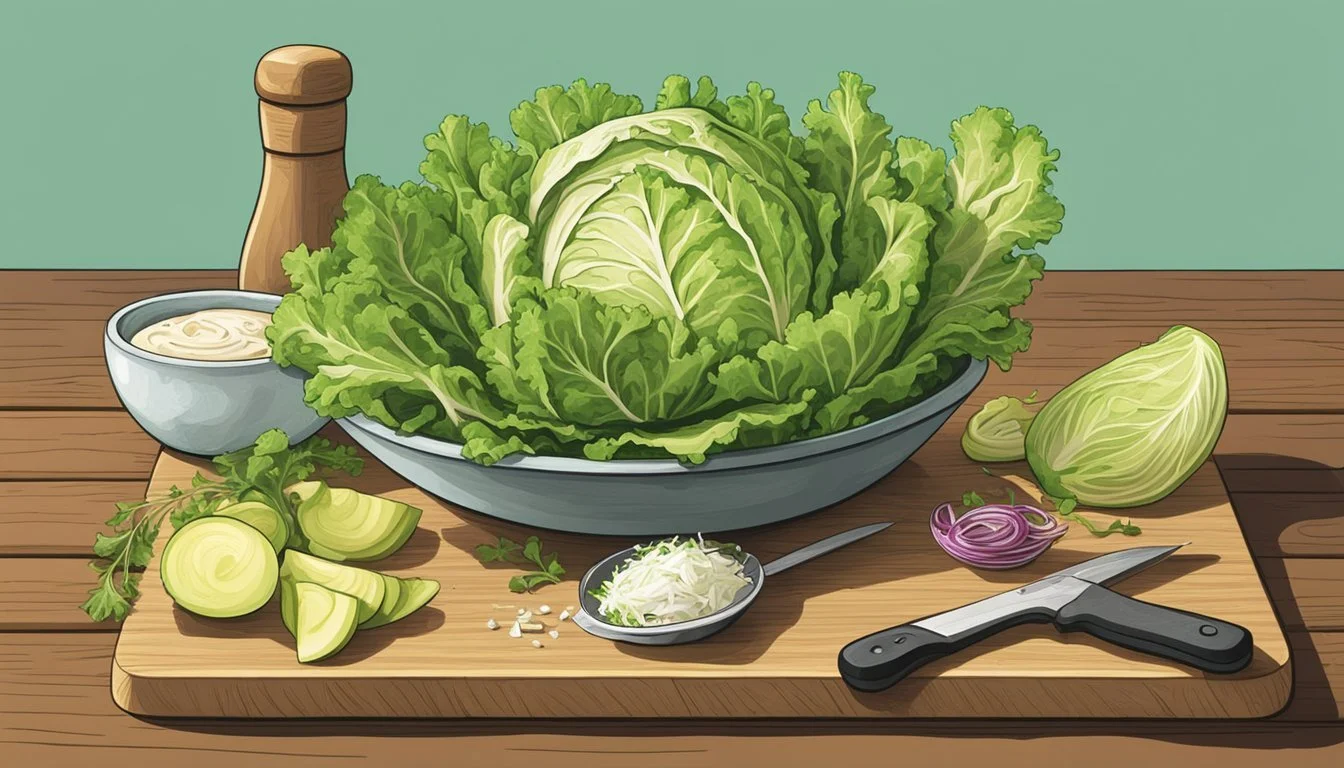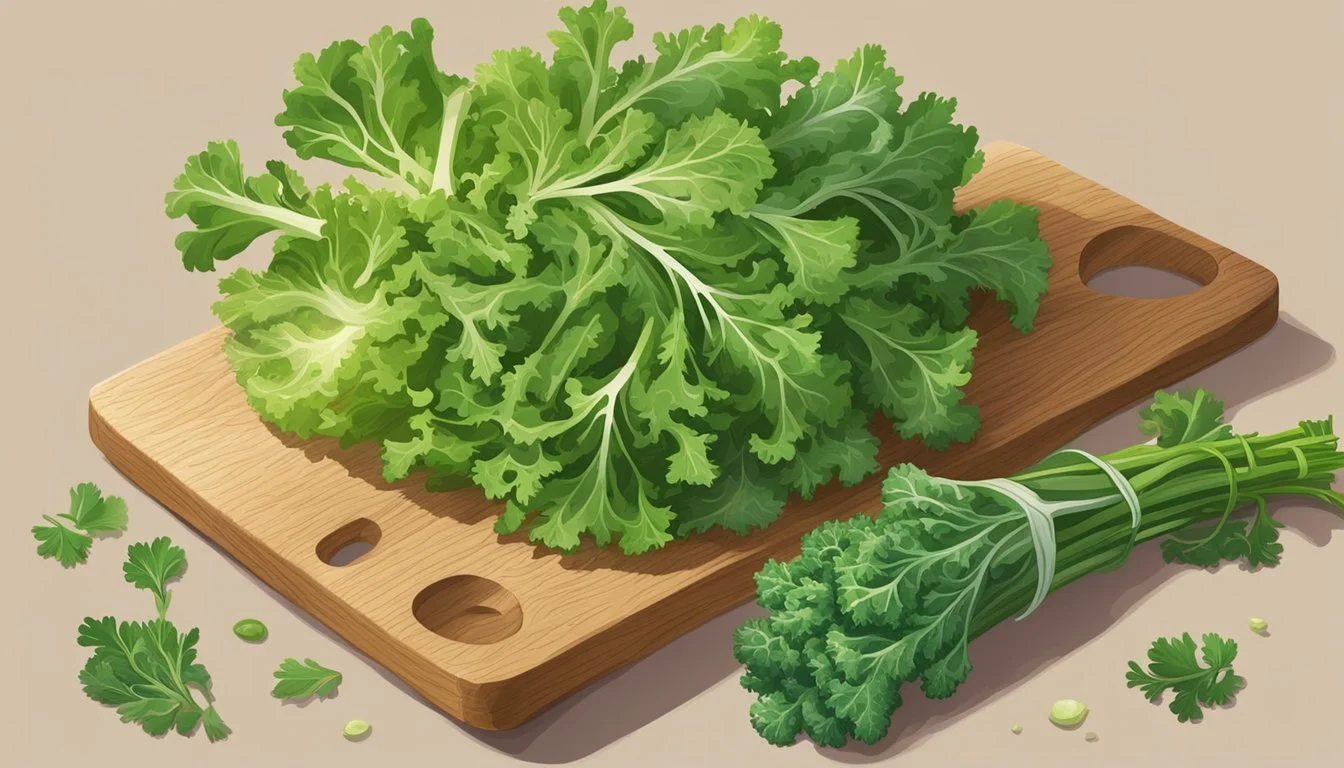Frisée Substitutes
Top Alternatives for Your Recipes
Finding the perfect substitute for frisée can elevate your culinary creations without compromising on flavor or texture. Frisée, also known as curly endive, is a member of the chicory family and is prized for its bitter taste and crunchy leaves. Used frequently in salads, frisée adds a unique bite that many food enthusiasts seek out.
When frisée is unavailable, alternatives like escarole, mustard greens, spinach, and chard can effectively replace it. Escarole shares a similar slightly bitter flavor, making it a suitable substitute in raw and cooked dishes. Mustard greens bring a spicy, peppery kick that can enhance salads and sautés. Spinach, known for its mild taste and versatility, is accessible and easy to work with, while chard, with its rich nutrient profile, provides another excellent option, particularly in Mediterranean-style recipes.
Each of these substitutes not only matches the taste and texture of frisée but also brings its own unique qualities to various dishes. Whether you are preparing a salad, soup, or a side dish, exploring these alternatives can open up new flavor possibilities in your kitchen.
Understanding Frisée
Frisée, also known as curly endive, is a leafy green vegetable known for its distinctive curly leaves and slightly bitter taste. It's often used in fine dining and adds a distinct texture and flavor to various dishes.
Characteristics of Frisée
Frisée is a member of the chicory family. It boasts curly, feathery leaves that are typically a mix of green and pale yellow. The inner leaves tend to be lighter in color and less bitter than the outer leaves, providing a balance of flavors.
This green has a crunchy texture, making it ideal for adding a bit of bite to salads. The bitter taste of frisée can be appealing in gourmet dishes, complementing richer ingredients like cheese and nuts.
Frisée in Culinary Use
In culinary applications, frisée is versatile. It is commonly used in salads, often paired with vinaigrette dressings to balance its bitterness. Frisée adds both visual interest and an interesting texture contrast to other softer greens.
Frisée is also used in warm dishes, such as wilted salads or as a bed for sautéed proteins. Its slight bitterness and crunchy texture hold up well when exposed to heat, adding complexity to dishes.
Frisée can be found in various dishes from soups to garnishes, appealing to chefs looking to enhance both flavor and presentation.
Common Frisée Substitutes
Several substitutes can be used in place of frisée, offering varied flavors and textures. These alternatives include endive, radicchio, escarole, and several other lettuce varieties that work well in various dishes.
Endive as a Substitute
Endive has a slightly bitter taste, making it a suitable substitute for frisée. There are two main types: Belgian endive and curly endive. Belgian endive has tight, pale leaves, while curly endive features frilly edges.
Belgian endive offers a crisp texture and mild bitterness, which makes it good for fresh salads or as a crunchy addition to sandwiches. Curly endive, on the other hand, balances a slightly more pronounced bitterness with a coarse texture, suitable for mixing into salads or using as a garnish.
Radicchio's Distinct Flavors
Radicchio stands out with its vivid red color and unique flavor profile. This leafy vegetable has a strong bitterness compared to frisée, adding a more intense kick to dishes.
When used in salads, it provides a vibrant contrast and enhances the visual appeal. Radicchio is also versatile in cooked dishes, as its bitterness mellows when grilled or roasted, making it flexible for numerous culinary applications. Its crispy texture remains advantageous in both raw and cooked forms, ensuring a delightful bite.
Escarole in Place of Frisée
Escarole offers a slightly less bitter taste than frisée, making it a mild yet effective substitute. It features broad, dark green leaves that hold up well under cooking.
Escarole's versatility shines in different dishes, from fresh salads to cooked stews and soups. Its tender inner leaves work beautifully raw, while the sturdier outer leaves can endure higher heat. Escarole provides a balanced bitterness that complements a variety of ingredients, ensuring it is a reliable addition to any frisée-replacing repertoire.
Other Lettuce Varieties
Various other lettuce varieties can also serve as substitutes for frisée. Chicory, with its thicker and bitter leaves, works well in many recipes requiring a bitter green.
Mustard greens offer a spicy, peppery flavor that can enhance salads and cooked dishes. They are rich in vitamins and relatively affordable. Spinach, with its mild taste and flexible use in both raw and cooked forms, can be a convenient option. Its widespread availability makes it an easy choice for everyday meals. Lastly, chard—also known as silverbeet or perpetual spinach—can replace frisée in salads, soups, and stews, thanks to its nutrient-rich profile and adaptable taste.
Other Alternatives to Frisée
When looking for substitutes to frisée, several vegetables can be used to achieve different flavors and textures in your dishes. This section covers some of the most relevant alternatives to consider.
Cabbage for Crunch
Cabbage provides a satisfying crunch to dishes, making it an excellent replacement for frisée. It has a mild flavor that doesn't overpower other ingredients. Cabbage is versatile and can be used in salads, soups, and stir-fries.
Benefits:
Crunchy texture
Mild flavor
Versatile for various dishes
When using cabbage as a substitute, consider slicing it thin for a delicate texture similar to frisée's lacey leaves.
Spinach's Mild Flavor
Spinach is another great substitute for frisée. Its mild flavor makes it suitable for a variety of recipes. It works particularly well in salads and warm dishes, where it tends to wilt beautifully.
Benefits:
Mild flavor
Wilts well in warm dishes
Easy to find
Spinach can be used interchangeably with frisée in equal amounts, making it a convenient option.
Chard as a Heartier Option
Chard offers a heartier option compared to other leafy greens. It has a slightly bitter taste and robust texture, which can enhance the complexity of dishes.
Benefits:
Robust texture
Slightly bitter taste
Nutrient-rich
Chard pairs well with strong-flavored ingredients and can be used both cooked and raw.
Mustard Greens' Spicy Taste
Mustard greens bring a spicy, peppery flavor that can substitute frisée’s bitterness. Their unique taste can add a kick to salads and cooked dishes.
Benefits:
Spicy, peppery flavor
Rich in vitamins A, C, and K
Adds a unique taste
These greens are widely available and relatively affordable, making them an accessible choice.
Green Leaf Lettuce
Green leaf lettuce can also serve as a frisée alternative. Its tender leaves and mild taste are suitable for salads, providing a fresh and light component.
Benefits:
Tender leaves
Mild taste
Good for fresh salads
Use green leaf lettuce in dishes where a light, fresh texture is desired without an overpowering flavor.
Iceberg for Cool Crispness
Iceberg lettuce is known for its cool, crisp texture. While it lacks the bitterness of frisée, it can add refreshing crunch to salads and other dishes.
Benefits:
Crisp texture
Refreshing
Easy to find
Iceberg lettuce is ideal for adding a cooling element to recipes, complementing other ingredients well without overpowering them.
Pairing Substitutes with Ingredients
Selecting the right ingredients to pair with frisée substitutes can greatly enhance the flavor and texture of your salads. Here are some specific combinations to consider.
Complementing Cheeses and Nuts
When using substitutes like spinach or escarole, pairing with cheeses and nuts can add layers of flavor. Blue cheese or goat cheese provide a creamy, tangy contrast that works well. For a crunch, walnuts or hazelnuts are excellent choices. The mildness of lettuce replacements can be complemented by the boldness of Parmesan or pecorino as well.
Fruit Pairings for Salads
Fruits can balance out the bitterness of greens such as arugula or chicory. Pears and dried cranberries offer sweetness and tartness. Winter pears add juiciness to salads with chard. Thin slices of apples or pomegranate seeds also provide crunch and color. Spinach can be paired with strawberries for a vibrant mix.
Adding Proteins to Salads
Adding proteins like bacon or grilled chicken can make salads with frisée substitutes more substantial. Salmon or tuna are great options with watercress or spinach. Hard-boiled eggs can accompany escarole, while tofu suits the milder taste of lettuces. Incorporating proteins provides balance and keeps you fuller longer.
Accompanying Vegetables
Roasted vegetables like beets and butternut squash can enhance the earthy flavors of chard and escarole. Adding carrots or radishes gives a fresh crunch to arugula salads. Bell peppers and cucumbers are versatile enough to pair with spinach. These vegetable combinations make for a varied and nutrient-rich dish.
By choosing complementary cheeses, fruits, proteins, and vegetables, you can make the most of your frisée substitutes in various recipes.
Culinary Tips for Using Substitutes
Successful incorporation of frisée substitutes into various dishes relies on a few straightforward adjustments and considerations. Employ these tips for seamless recipe adaptation, impactful food writing, and elevating culinary experiences.
Adjusting Recipes with Substitutes
When using frisée substitutes such as spinach, chicory, or escarole, it is crucial to consider their unique flavors and textures. For example, spinach has a milder taste and wilts quickly, making it ideal for warm dishes like soups and stir-fries. On the other hand, chicory and escarole have a more pronounced bitterness, which pairs well with robust salad dressings or hearty cooked dishes.
Adjusting quantities is key. For instance, chicory’s stronger flavor means you may want to use less than you would frisée. Matching textures is equally important; tender greens like spinach or mustard greens may need less cooking time.
Food Writing and Reviews
Writing about frisée substitutes in food writing or restaurant reviews calls for a detailed description of the substitutes' flavors, textures, and best uses. Describing chard in a review might highlight its Mediterranean roots and nutritional benefits, such as being rich in vitamins and minerals. Comparisons with frisée should be clear and specific, helping readers visualize and understand the alternative.
Reviewers should note the context of dishes—whether it's a fresh salad or a warm, sautéed preparation. Highlighting successful restaurant dishes that utilize substitutes can guide readers in their culinary explorations and experimentations.
Recommendations for Different Dishes
Choosing the right substitute depends on the dish. For salads, escarole and chicory work well due to their slight bitterness and crisp texture, providing a good contrast to other ingredients. In soups and stews, chard or mustard greens can endure prolonged cooking without losing their structure, adding depth of flavor.
In stir-fries, spinach or chard can be excellent substitutes because they cook quickly and absorb flavors well. For dishes requiring a unique kick, mustard greens’ peppery note can be an exciting twist, suitable for both raw and cooked applications.
Culinary Expertise on Substitutes
From a culinary expert’s perspective, selecting the right substitute involves understanding the primary characteristics of the original ingredient. Frisée's curly texture and bitter taste can be mimicked by chicory or escarole. Experts might suggest pairing substitutes with complementary ingredients to balance their flavors—using sweet dressings or toppings with bitter greens like chicory.
Nutritional benefits of substitutes are also worth noting. For instance, mustard greens offer high levels of vitamins A, C, and K, while chard provides a variety of essential minerals. Knowledgeable chefs can leverage these benefits to enhance both the flavor profile and healthfulness of dishes, achieving a harmonious balance in their culinary creations.
Understanding the Nutritional Aspects
When considering frisée substitutes, it is crucial to assess the nutritional benefits and how these greens can balance flavors within a dish. Various greens provide unique vitamins, minerals, and textures that can complement or enhance salads and other recipes.
Nutritional Benefits of Greens
Leafy greens such as mustard greens, chicory, and spinach offer a range of nutrients.
Mustard Greens: These have a spicy, peppery flavor and are rich in vitamins A, C, and K. They also contain a good amount of fiber.
Chicory: With its thicker leaves and bitter taste, chicory is robust and provides an additional depth of flavor. It is also a source of vitamins A, C, and K, along with minerals like magnesium and potassium.
Spinach: Known for its mild taste and soft texture, spinach is highly versatile. It is an excellent source of vitamins A, C, and K, and contains important minerals such as iron and calcium.
Balancing Flavors and Nutrition
When replacing frisée, it’s important to maintain a balance between flavors and nutritional value.
Bitter vs. Sweet: Frisée has a slightly bitter taste that can be replaced by greens like chicory for a similar experience, or softened with milder greens like spinach.
Texture: The crunch of frisée can be mimicked by chicory's thick leaves or softened with the tender leaves of spinach.
Nutritional Mix: Mixing different greens can enhance the nutritional profile of a dish. Combining mustard greens with spinach, for instance, can add vitamins while moderating the potent peppery flavor.
Using these substitutes wisely ensures that the final dish remains nutritious and flavorful, without losing the essence of the original ingredient.








